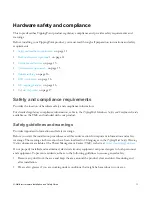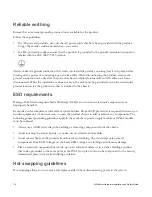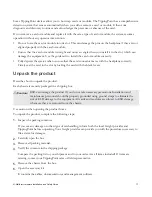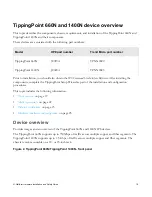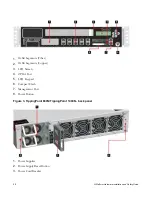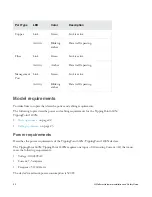
N-Platform Hardware Installation and Safety Guide
7
The SMS dashboard provides at-a-glance monitors with launch capabilities into the targeted management
applications that provide global command and control of TippingPoint. Included in the SMS dashboard
display are the following items:
• Entries for the top five filters triggered over the past hour in various categories
• A graph of triggered filters over the past 24 hours
• The health status of devices
• Update versions for software of the system
Through the Dashboard, you gain an overview of the current performance of your system, including
notifications of updates and possible issues with devices monitored by the SMS.
Intrusion Prevention System devices
Intrusion Prevention System (IPS) devices protect your network with the Threat Suppression Engine (TSE)
by scanning, detecting, and responding to network traffic according to the filters, action sets, and global
settings maintained on each device by a client.
Each device provides intrusion prevention for your network according to the number of network
connections and hardware capabilities. IPS devices also have built-in intrinsic high-availability features,
guaranteeing that the network keeps running in the event of system failure.
TippingPoint Intrusion Prevention Systems are optimized to provide high resiliency, and high-availability
security for remote branch offices, small-to-medium and large enterprises and collocation facilities. Each IPS
can protect network segments from both external and internal attacks.
Multiple TippingPoint devices can be deployed to extend this unsurpassed protection to hundreds of
enterprise zones. You can monitor and manage the devices by using the local client available on each device,
or by using the SMS client to monitor and manage well over a hundred devices. The TippingPoint N-
Platform and NX-Platform devices support IPv6, tunneling (including GRE and multi-layer tunnels), and
inspection bypass rules for trusted traffic.
IPS local clients
The TippingPoint System provides various points of interaction, management, and configuration of the IPS.
The clients include graphical user interfaces (GUI) and command line interfaces (CLI). These clients include
the following:
•
Local Security Manager (LSM)
— Web-based GUI for managing one IPS device. The LSM provides
HTTP and HTTPS (secure management) access. This access requires access from a supported web
browser (Internet Explorer, Mozilla Firefox, and Netscape). Using the LSM, you have a graphical display
for reviewing, searching, and modifying settings. The GUI interface also provides reports to monitor the
device traffic, triggered filters, and packet statistics.

















